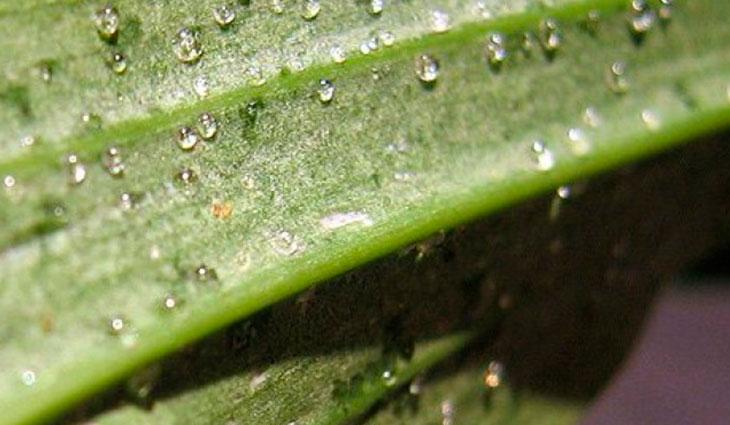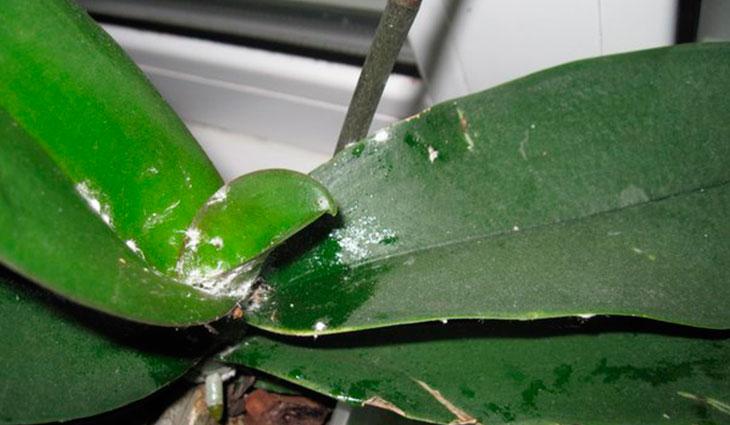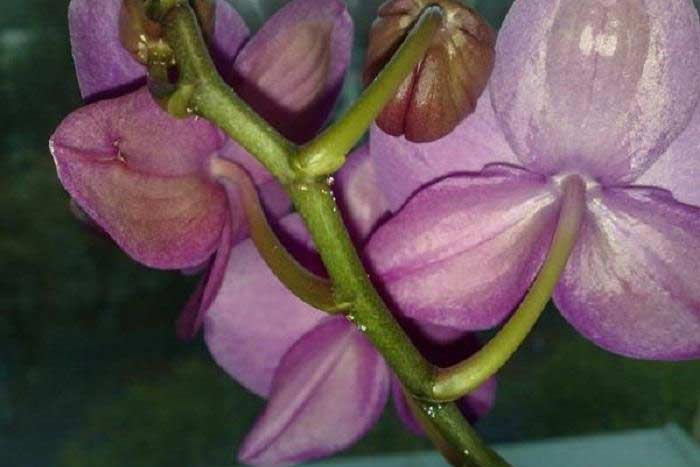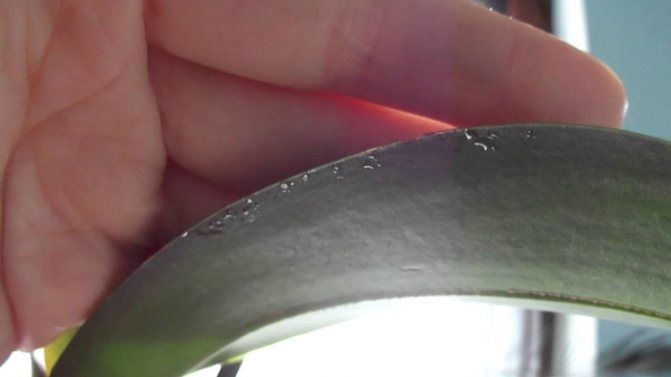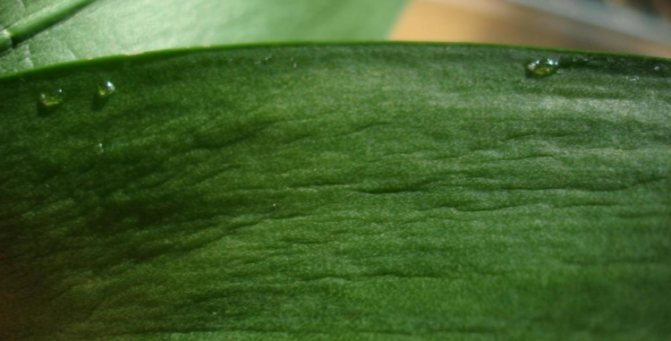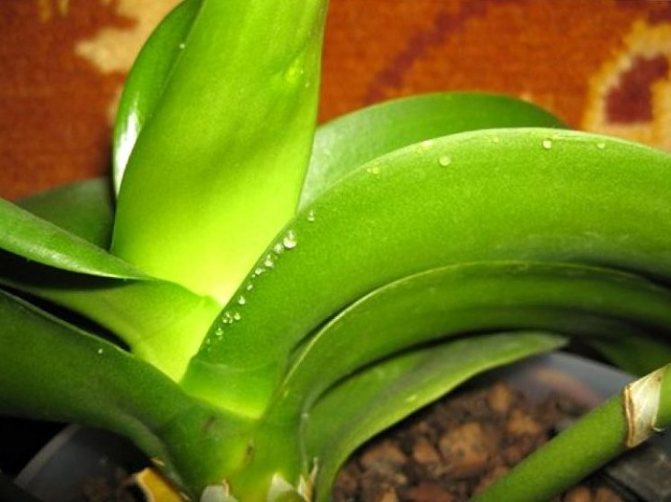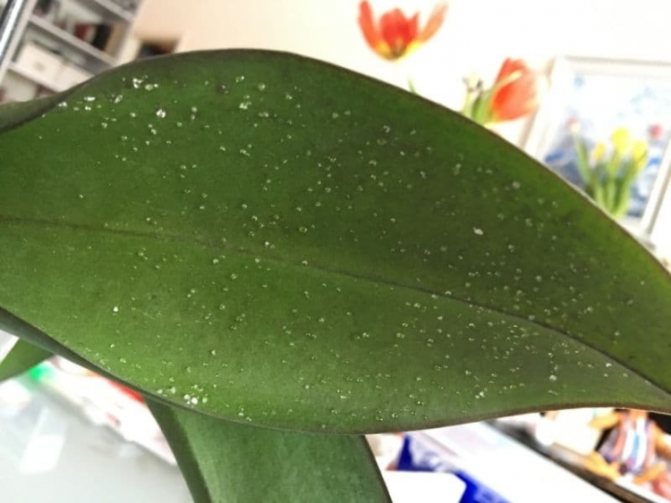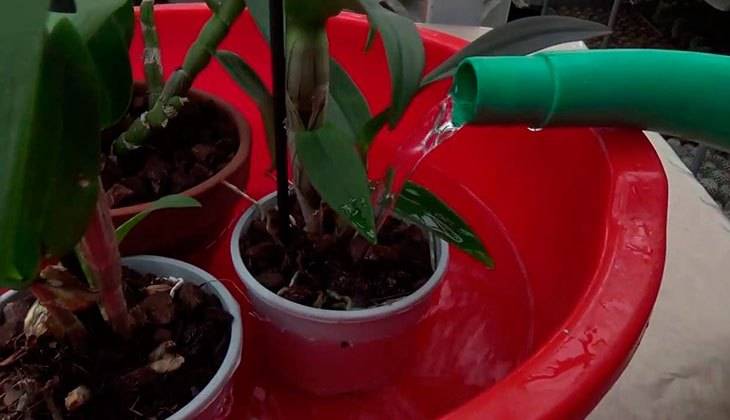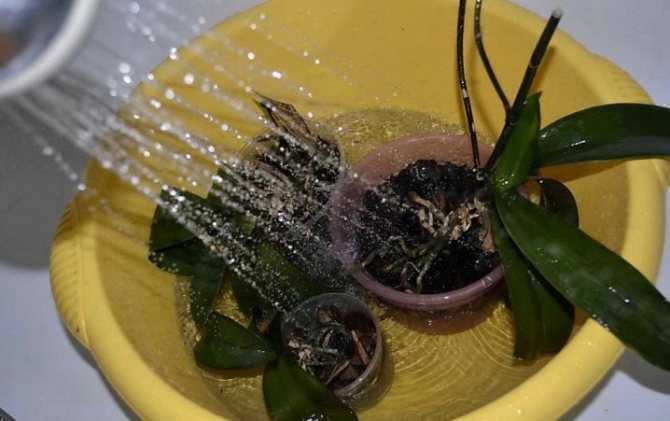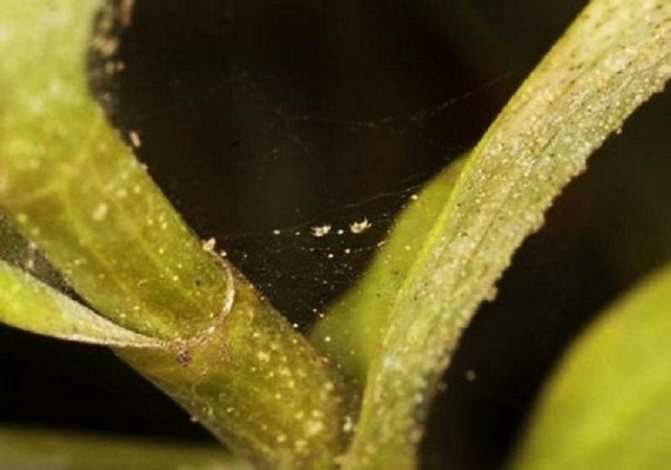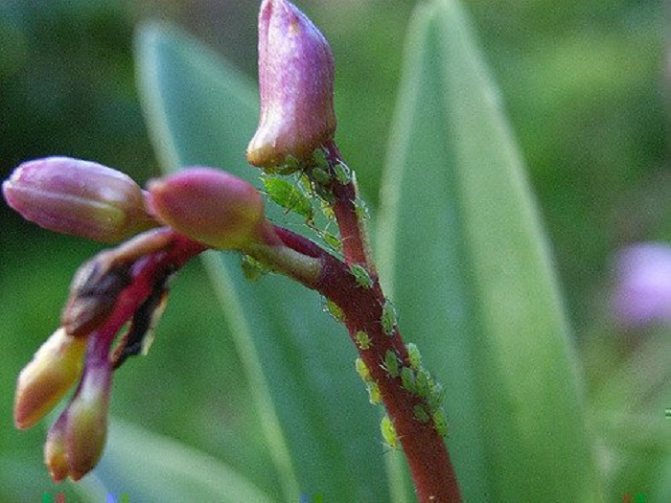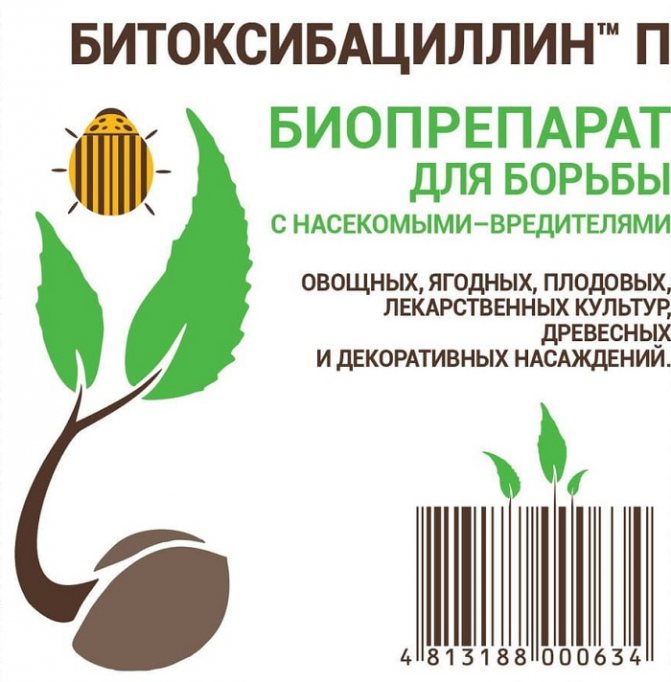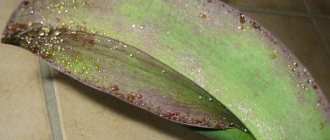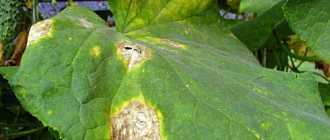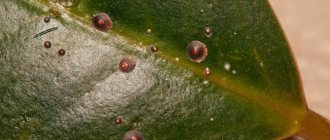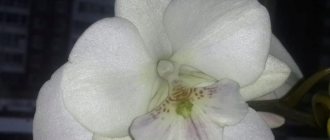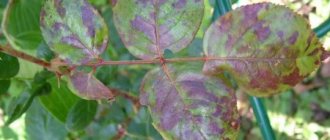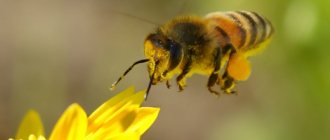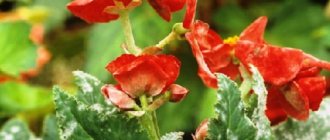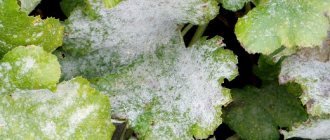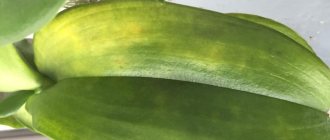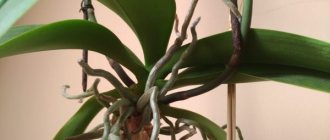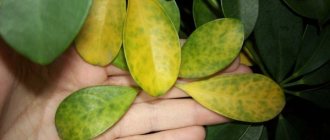Plants »Flowers
0
1332
Article rating
The appearance of sticky spots on the foliage, as well as on the branches, peduncle and stem of the phalaenopsis orchid is a reason to think about the health and condition of the flower. Sticky drops on orchid leaves can appear for various reasons, from improper plant care to a serious disease that leads to the death of the flower.
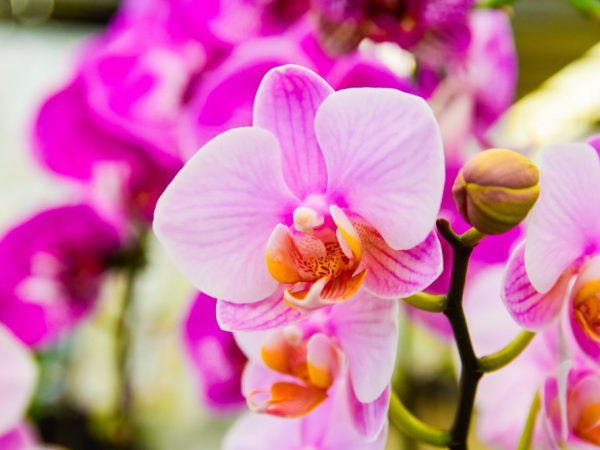
Reasons for the appearance of sticky drops on an orchid
Reasons for the appearance
If sticky drops appear on the leaves of the orchid, then it is necessary to find out the source of the problem.
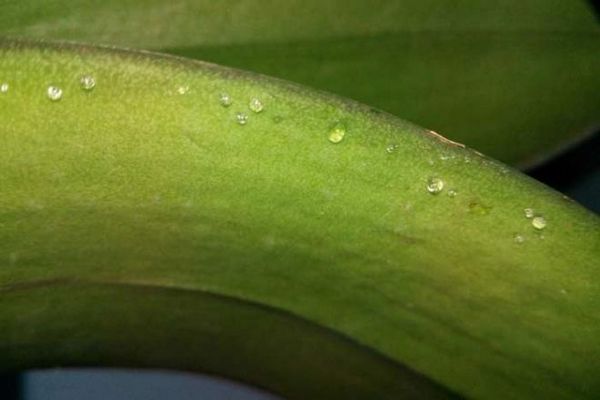

Sticky drops
Regardless of the reasons, the plant needs to change the conditions of detention.
Natural process
The root causes of the appearance of sticky drops include:
- covering foliage with nectar as a consequence of the metabolic process - the processing of sugars. The sweet taste of the secretions attracts the insects needed to pollinate the plant. Otherwise, the drops serve as bait for parasites, which adhere to the surface of the leaf plates;
- features of orchid varieties. Some varieties constantly produce a syrupy mass. The process does not depend on the conditions of detention.
Note! To clarify whether the release of mass is a natural process, the culture is carefully examined for the presence of parasitic insects. In addition to reducing the frequency of watering, you need to increase the room temperature.
Deteriorating conditions of detention
The sources of the appearance of a glue-like substance on foliage include:
- regular waterlogging of the soil. With constantly wet soil and accumulation of liquid in the pan, processes occur that negatively affect the plant;
- poor conditions of detention. Direct sunlight on leaf plates leads to superficial burns and the release of a sweetish substance. The same effect occurs when exposed to low temperatures;
- excess amount of fertilizers. In addition to sticky streaks, signs of damage appear on the leaves. On the foliage, pigment patches are formed that are unusual for a culture.
Important! The proximity to central heating radiators, excessively dry air also negatively affects the general condition of the plants.
Pests
Why does an orchid have sticky leaves? Certain insect parasites provoke activation of defense mechanisms. The list of known pests includes:
- scabbards. Constant feeding with plant sap leads to the formation of tubercles and deformation of the leaf plates;
- aphid. The product of the insect's vital activity is a sweetish substance that covers the foliage.
Important! Most of the parasitic organisms cause serious damage to the leaf blades, causing them to deform and the appearance of irregular or white spots.
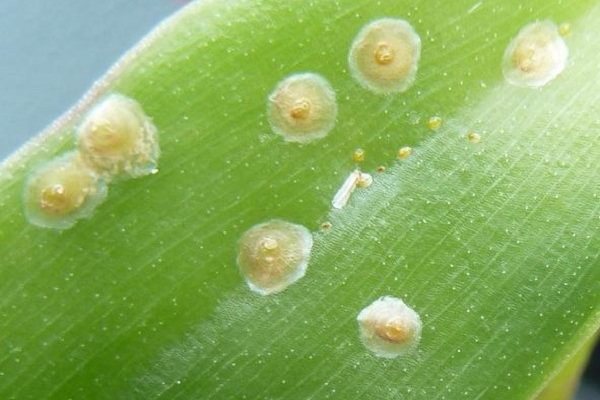

Orchid
Diseases
The main disease affecting orchids is powdery mildew. With the development of pathology, a whitish spot with blackish blotches is formed on the leaf plates.
Diagnostics
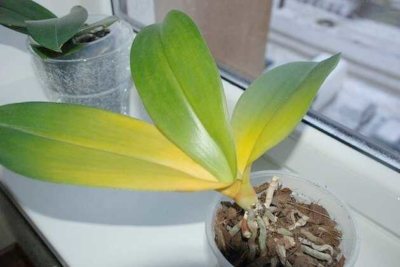

The success of treatment depends on the correct diagnosis of the phenomenon, therefore before starting the measures to restore the health of the flower, it is necessary to conduct a thorough visual inspection:
- If, in addition to the sticky layer, white bloom or black spots are also observed on the leaves of phalaenopsis, this is a sign of powdery mildew.
- Yellow spots on the leaves indicate an excess of mineral fertilizers.
- It is also necessary to inspect the reverse side of the sheet. If the reason for the appearance of sugar drops lies in insect pests, they should be looked for there.
What are sticky drops
On the orchid on the leaves, drops are the reasons
There are several mechanisms for the formation of a sweetish secretion:
- regular overflow leads to the concentration of moisture in the soil and various parts of the plant. An overabundance leads to the fact that it is not retained inside the flower and is released through the pores in the foliage. The droplets are only slightly sticky, they contain a minimum amount of sugars;
- spontaneous release of the solution is associated with the attraction of insects to transfer pollen or destroy pests. The drops contain more fructose;
- the formation of a sugar-like mass can occur during attacks of parasites. When a sheet plate is punctured, a small amount of juice is released from it, containing a lot of sugars, over time it can be covered with it all.
For your information! With sunburn, the green part of the plant begins to dry out, and thick droplets form on its surface, resembling resin in appearance.
Flower treatment options
What if there are sticky droplets on the orchid? First, you need to identify the source of the problem and only then begin to deal with the root causes.
Improving conditions of detention
Diseases of cacti: common diseases and their treatment methods
If a sticky and transparent plaque appears on the leaf plates and there are no secondary symptoms of diseases, it is necessary to reconsider the conditions in which the flower is contained. Resuscitation begins with the following changes:
- exclusion of direct sunlight on the plant;
- reducing the volume and frequency of watering;
- reducing the amount of dressings;
- stabilization of the room temperature up to 23 ° С;
- carrying out soil moistening only through the pallet.
Important! After changing the usual routine for a week, the culture is constantly monitored. If the problem was improper care, then the condition of the orchid will quickly return to normal.
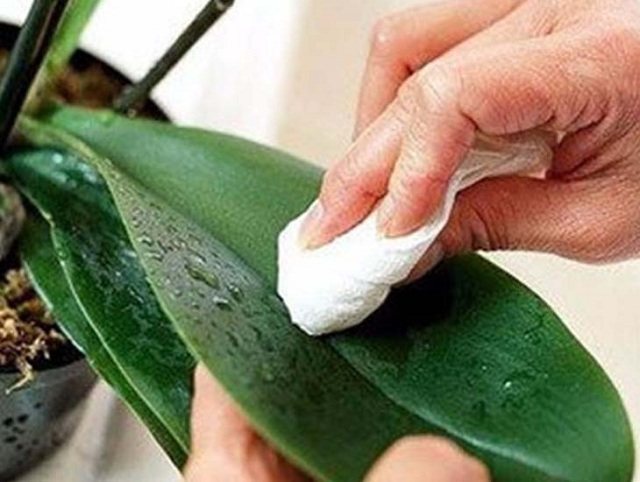

Rubbing the leaves
Leaf processing
Despite the work of protective mechanisms and the death of some of the parasitic insects on sweet spots, the plant cannot deal with the problem on its own. Florists recommend processing the green part of the flower using special preparations:
- alirin-B. Affected plants are soaked in a container with water, where 2 tablets of the drug are dissolved;
- Bordeaux liquid. A mixture of lime and copper sulfate suppresses the active vital activity of bacteria;
- Quadris. It is used for therapeutic and prophylactic treatment of indoor flowers;
- mospilan. The therapy is carried out several times with an interval of 10 days;
- topaz. The agent is active against fungal diseases, it is made in an emulsion. To obtain the maximum effect, it is combined with contact forms of fungicides;
- trichodermine. Refers to biofungicides, it is recommended for soil and root system cultivation;
- phytosporin. The drug belongs to the universal remedies designed to combat fungal infections;
- phosphamide. The medicine is diluted in water and sprayed (with a small number of pests);
- foundation. Used to kill fungal diseases including powdery mildew. Processing is carried out at intervals of 3 days;
- zircon. The drug is characterized by the ability to increase the stress resistance of the culture, it prevents the formation of rot, bacteriosis and powdery mildew;
- pure flowers. It is used for both therapy and prevention.
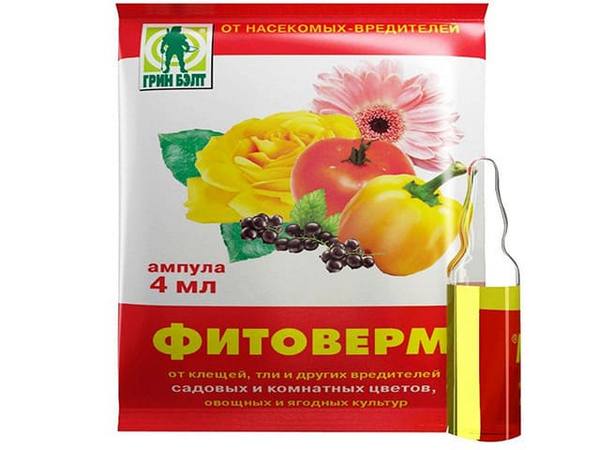

Fitoverm
If pests are detected, the following measures are taken:
- a sick orchid is sent to quarantine, taken to another room;
- with a cotton swab, gently wipe all parts of the plant, removing midges;
- damaged parts are removed;
- the flower is sprayed with an insecticide solution.
Important! During the procedure, there should be no pets or children in the room.
Traditional methods of treatment
In case of superficial damage to the plant, alternative therapies can be used. The list includes the following activities:
- daily washing of leaf plates with soapy water;
- with a weak reaction to soap, vodka or alcohol is added to the mixture - the minimum amount;
- shower and further processing of the green part with aromatic oils;
- an oil-garlic mixture is applied;
- an infusion with horsetail is made, after filtration, the plant is treated daily;
- foliage is cleaned with a soda-iodine solution.
Note! Traditional medicine methods have a gentle effect. They do not harm indoor flowers, but they are not able to fight massive damage to the culture by dangerous parasitic insects and fungal diseases.
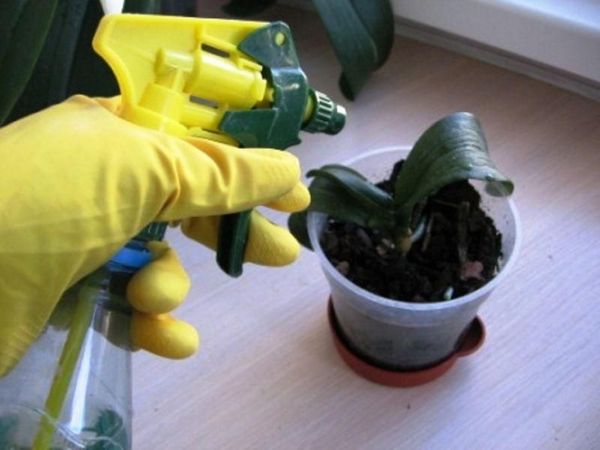

Spraying the orchid with horsetail infusion
How to solve the problem
When sticky drops appear, you need to take some action to remove them. To do this, you must first determine what exactly caused the formation of such formations. Your further actions depend on the root cause.
If the orchid experiences discomfort due to improper care or maintenance conditions, then it should be moved to a more suitable room and watering and feeding should be coordinated. If the reason lies in parasites and pathogenic microflora, then the flower must be immediately sprayed with special means. Otherwise, the orchid may die. To destroy all pests, the flower should be transferred to a hot place. Thanks to this, the bugs will get out. After that, the leaves need to be wiped well to completely remove the sticky bloom. Then the plant is sprayed with preparations specially designed to combat a specific type of parasite or pathogenic microflora. For maximum effect, the orchid should be transplanted into a new sanitized pot with a replacement substrate.
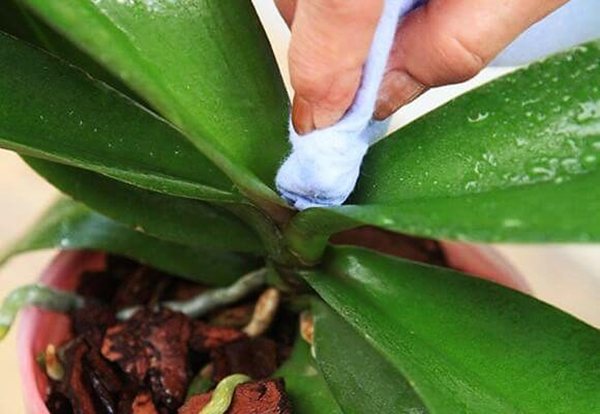

You can use folk remedies against powdery mildew. Problem areas can be treated with an oil solution. It is prepared as follows: 2 tbsp is diluted in 1 liter of water. l. olive oil. After that, the prepared solution is applied to the plant using a spray bottle.
You can also treat the flower with a product made from 1 liter of water, 10 ml of denatured alcohol and 15 g of liquid soap. However, this method is not suitable for thin-leaved varieties.
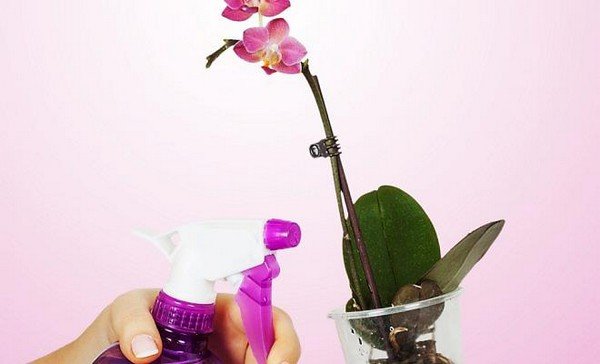

Disease prevention
Diseases of peonies: methods of treating diseases, prevention and control of pests
The prevention of the development of ailments in orchids is carried out in accordance with the accepted rules:
- in the summer, the temperature in the room should not exceed 23 ° C, and in the winter - 18 ° C. Violation of the regimen will lead to repeated outbreaks of infections;
- watering in a hot season is carried out within reasonable limits, so that overflow does not provoke rotting of the root system;
- soil moistening in the summer months takes place twice a week, in the winter - every 7 days;
- water for irrigation is used after settling, it cannot be added to foreign impurities, salt or sweeten;
- the optimum humidity in the room is 60%. An increase or decrease in the marks leads to the defeat of various diseases;
- when a plant is transplanted or propagated, a thorough examination of the culture is carried out for the presence of insect pests, darkening or age spots, sticky areas and decaying roots;
- the flower needs a sufficient amount of oxygen, so the room must be ventilated daily;
- containers with flowers should not be placed on windowsills in direct sunlight. When located on the south side, they are shaded;
- top dressing is applied twice a month during flowering, the rest of the time, a monthly application of fertilizers intended for orchids is sufficient;
- to maintain health, formulations containing potassium and iron, useful minerals are used. In their role, special solutions for orchids are used, sold in flower shops;
- cleaning from dust and preventing the colonization of harmful insects involves wiping the leaves with a damp cotton pad or regularly spraying.
Compliance with the rules of care will reduce the risk of lethargy of plants, their damage, dryness, rotting of leaf plates and the root system.
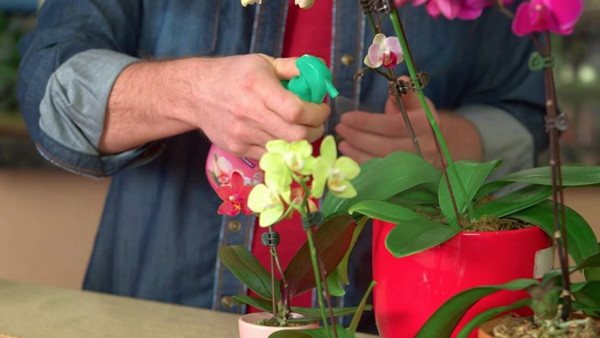

Preventive treatment
Important! Experienced growers recommend adhering to a strict watering schedule. The orchid reacts negatively to waterlogging and insufficient soil moisture, resulting in foliage stickiness.
It is undesirable to use means against insect pests as prophylactic drugs. Improper use can be a prerequisite for the defeat of culture and its death. Insecticides can be used as therapy but not prophylaxis.
Plant care after treatment
After carrying out therapeutic measures to eliminate the syrupy mass from the leaf plates, it is necessary to continue processing. The condition is associated with a high risk of recurrence and secondary damage to the flower, the transmission of diseases or parasites to nearby growing indoor plants.
There are the following rules for orchid rehabilitation care:
- all green areas of the plant are washed daily with a wet cotton pad dipped in soapy water or clean water: from above and below, both foliage, peduncles, and the trunk;
- the orchid is transplanted into a new pot with a complete replacement of the soil to exclude a second disease;
- the container in which the diseased plant was located is thoroughly washed and disinfected before the next use;
- soil moistening is carried out no more than once a week, controlling the volume of water;
- the first feeding is carried out no earlier than a few months after the final recovery of the culture;
- in order to avoid the appearance and active reproduction of various pests, the humidity in the room must not be above 60%.
Before starting therapeutic measures, it is necessary to eliminate negative conditions from the environment. Move the plant from a brightly lit windowsill, adjust the temperature and humidity levels, reduce watering and feeding. Only after all the conditions are met, treatment can be performed.
Only the correct implementation of therapy guarantees the recovery of the phalaenopsis and its further flowering. The appearance of sticky contents on the leaf plates requires the attention of the owner of the flower and the search for the source of the anomaly that has arisen. Ignoring the problem will serve as the primary source of long-term illness and death of the culture, and in difficult cases, all indoor plants that are in close proximity to the sick orchid.
Preventive measures
Prevention of sticky drops is the same as for other Phalaenopsis problems. These measures include:
- correct watering;
- compliance with microclimate conditions;
- timely treatment with vitamin preparations, fungicides;
- periodic inspection of the plant.
Special vitamin cocktails, which include B vitamins and succinic acid, help to strengthen the immunity of Phalaenopsis. Such dressings are useful for the prevention of flower diseases.

